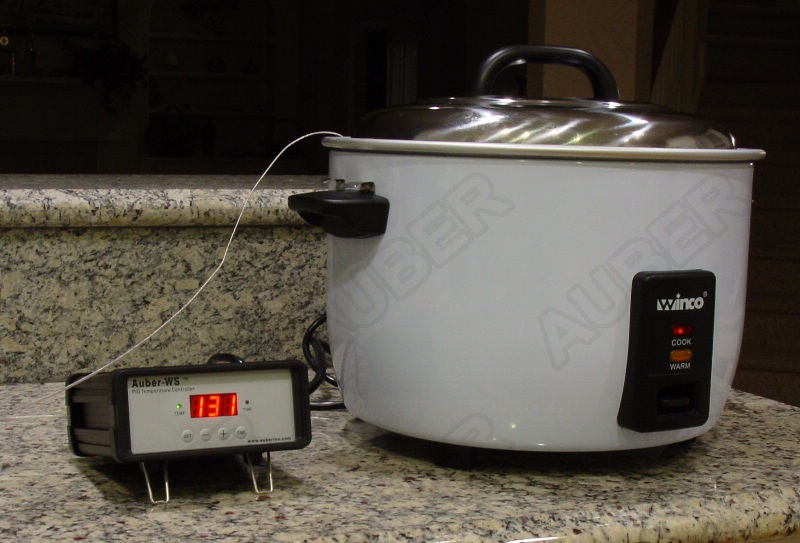So, here's the low-down: Killing bacteria in chicken is not simply a function of temperature reached, but also the time spent at that temperature. Here is a graph based on data found here that shows the amount of time that chicken (10% fat, worst-case scenario) must spend at a given temperature to achieve a 7-log(10) lethality of any salmonella present. In other words, by USDA's standards, it's clean.

Alright... let's try some "not quite done, but perfectly safe-to-eat" chicken!
We'll be cooking this chicken with the sous vide method. If you're hearing this term for the first time, please read my other posts on the subject as well as the pages I link to. Although Kenji Alt cooked his to 140, I'm gonna go for 150, which should be nice and juicy without being medium rare. I'm not as hardcore as he is. ;-) The plan is to cook the chicken to the desired doneness in the crock pot, then sear the chicken in a hot pan of olive oil.
First off, I've found a nice new way to cook sous vide, other than the expensive option or the do-it-yourself method. It's not foolproof, but it's pretty good.
My buddy Scott Derham turned me on to a really nice crock pot that he has, made by Hamilton Beach, which is sold at Wal-Mart for less than $50. It includes a temperature probe for heating food to a programmable temperature. When used in the proper mode, the crock pot can heat up quickly to whatever temperature you set, and then it goes into "warm" mode where it will more or less hold temperature over time. It's meant to control cooking based on the internal temperature of a roast, chicken, etc., but when you fill the crock pot with water and just put the probe into that water, you have a temperature-controlled water bath. It works well, as long as you don't want to go lower than 140, because that's the minimum temperature setpoint. Here it is:

I cooked four fresh chicken breasts seasoned with dried thyme, garlic powder and kosher salt. I seasoned the meat before putting it in the bag, which I've found re-constitutes dried herbs and spices. Desired? Sure, why not?


2 hours later, and we have some pretty ugly chicken! Notice the reconstituted herbs and spices. Yes, that's right, I turned back thyme. Sorry... that was really bad. Anyway, here are the pics:


As you can see, this chicken turned out so moist! The texture was smooth, and you could almost chew it with your tongue!



I also did a tri-tip a few days ago in this crock pot, and it turned out very well too. I just didn't take any pictures. The vacuum-sealed tri-tips from Costco can simply be tossed directly into the water and cooked in the package, then removed and pan-seared or grilled to get some extra flavor. Worked out very well!
I've ordered the parts to build my own sous vide temperature-controlled water bath, so keep an eye out in a couple weeks for my first runs with this setup. Also coming up is a writeup on the construction of my Ugly Drum Smoker (UDS).










